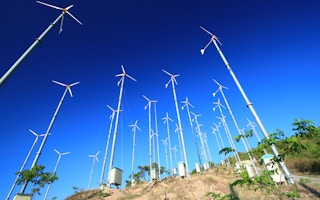One of the main reasons why Southeast Asia’s transition to clean energy has been so slow is that investors are unwilling to take on the risk of early-stage projects that, for a variety of reasons, could fail.
The hesitance of investors has been exacerbated by the Covid-19 pandemic, but a group of philanthropic organisations is attempting to ease the funding gap by pumping US$50 million into early-stage projects in Southeast Asia.
Managed by Singapore-based Clime Capital, the fund, called the Southeast Asia Clean Energy Facility (SEACEF), is supported by a number of large international climate foundations, and is the first of its kind to address the highest risk part of renewables investments.
Among the foundations are United States-based Bloomberg Philanthropies, Sea Change Foundation International, Wellspring Climate Initiative, High Tide Foundation, Grantham Foundation, Packard Foundation and United Kingdom-based hedge fund Children’s Investment Fund Foundation (CIFF).
The initial focus will be on Southeast Asia’s most climate-critical countries—Indonesia, Vietnam and the Philippines—to address the funding gap left by traditional sources of climate finance amid the pandemic.
Mason Wallick, Clime Capital’s managing director and director of SEACEF, said that Covid-19 had exposed the most vulnerable piece of clean energy investment in Southeast Asia, and his company would be helping to plug the gap.
“Even in times of stability, the first 1 to 2 per cent of development finance for clean energy projects is the hardest to find, given it carries the highest risk,” he said, adding that high-risk capital is now critical to turn proposals into major clean energy projects.
“If early-stage investors haven’t done the right feasibility studies, problems will occur further down the road,” he told Eco-Business, pointing to grid connectivity issues and black-outs that have often blighted renewables projects in Southeast Asia.
An example of a renewables project going wrong occurred in 2016 on the island of Negros, the Philippines. Investments were made but without the proper analysis. The project went ahead, and poor transmission lines meant that the power generated couldn’t leave the island, Wallick said.
“You have to do the early-stage work. If you do a study and it goes wrong, you have to pull the pin. We’re going to fund that high-risk part. You need those interventions upfront, so the project can go ahead and be successful.”
SEACEF’s funding is to go towards “proven technologies and business models” such as solar, wind, and energy storage, and also electric mobility, building energy efficiency, and transmission infrastructure.
The philanthropies are investing an initial US$10 million into SEACEF, and are later looking to attract up to US$40 million in additional capital.

















